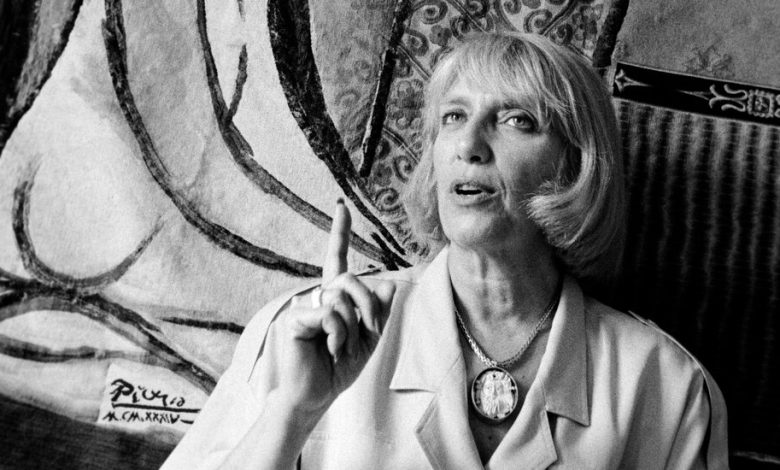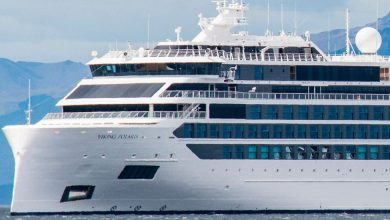Maya Ruiz-Picasso, Artist’s Daughter and Inspiration, Dies at 87

Maya Ruiz-Picasso, a daughter of Pablo Picasso who as a child was painted and drawn by her famous father numerous times, and who after his death in 1973 was frequently consulted for her knowledge about his works, died on Tuesday in Paris. She was 87.
Her daughter, Diana Widmaier-Ruiz-Picasso, an art historian, said the cause was pulmonary complications.
Ms. Ruiz-Picasso was the child of Picasso’s long relationship with Marie-Thérèse Walter, with whom he became involved in 1927 although he was married at the time to Olga Khokhlova, a Russian ballet dancer. He remained married until his wife’s death in 1955 and had other lovers as well, but he spent considerable time with Ms. Walter and their daughter during the tumultuous years of the Spanish Civil War and World War II. It was a period of frequent deprivation throughout Europe.
“I still have tender memories of those times when we would gather in the kitchen to draw together,” Ms Ruiz-Picasso told her daughter as Ms. Widmaier-Ruiz-Picasso was preparing an exhibition about her mother and grandfather that opened in April at the Musée Picasso-Paris. “It was the only warm place in the apartment.”
By the time Maya was born in 1935, Picasso had already done landmark work in Cubism and Surrealism, and his artistic interests in the late 1930s and ’40s covered a wide range. Some pieces wrestled with the turbulence and violence of the day, but others had a childlike quality. He is said to have once remarked, upon viewing an exhibition of children’s drawings, “When I was their age I drew like Raphael, but it took me a lifetime to learn to draw like them.”
In the same period that he was unveiling “Guernica” (1937), his jolting masterwork inspired by the bombing of that Spanish city, he was painting works like “Maya With Doll” and “Maya in a Sailor Suit” (both 1938), which depicted his daughter with a typically Picasso-esque distorted face. In one, she has a doll in her lap; in the other, she’s chasing a butterfly with a net.
Notes accompanying the current exhibition say that 14 portraits of Maya painted in 1938 and 1939 are known to exist. Most are in the current Paris exhibition, along with photographs, drawings and other memorabilia.
“Maya’s portraits reflect the great joy that she brought into the artist’s life, even on the eve of the Second World War,” Ms. Widmaier-Ruiz-Picasso, who curated the current exhibition with Émilia Philippot, said by email. “She would become the most frequently depicted of Picasso’s children — a muse, like her mother.”
The current exhibition, she said, “is about childhood, it is about a great artist studying almost like a doctor, like a neurologist, the physical and psychological evolution of a child.” Maya is a figure of innocence, she said, but also a witness to a world “about to collapse.”
Picasso painted his last portrait of Maya on the eve of her 18th birthday in 1953. By then she had distanced herself from Picasso, and she rarely saw him after that. But she was declared an heir after his death. She later became known as an authority on his works and was sometimes called upon by Sotheby’s or Christie’s to authenticate a particular piece, or declare it a fake.
She made headlines in 2006 when she declared that several drawings attributed to Picasso and sold by Costco, the warehouse-club wholesaler, were fakes, as were the authenticating certificates that came with them, which had supposedly been signed by her. “The certificate is a fake, ditto the signature, ditto the spelling, ditto the drawing,” she told The New York Times in reference to one of the works, a drawing of a faun.
Another of the disputed drawings was of a bullfight. She deemed it not a Picasso for several reasons, one of them anatomical.
“My father knew that bulls have two testicles, in addition to something very masculine,” she told The Times.
Ms. Ruiz-Picasso, who was christened María de la Concepción, was born on Sept. 5, 1935, in Paris. She was named after Picasso’s sister, who had died in childhood, a loss that haunted him. In time “María” became “Maya” as a result of how the young child pronounced her own name.
According to the 2021 book “A Life of Picasso: The Minotaur Years, 1933-1943,” the final installment of John Richardson’s four-part biography of the artist, Picasso registered the birth as “father unknown” because French law at the time did not allow a married man to be listed as the father of another woman’s child. Instead, at her baptism in 1942, he identified himself as her godfather.
She grew up mostly in France, with her father dropping into her life periodically.
“I loved watching my father paint because he approached the canvas as if he were dancing on tiptoes,” Ms. Ruiz-Picasso said in an audio guide to a 2013 Picasso exhibition at the Museum of Fine Arts, Houston. “First, he painted. Then, to see the work, he had to back away. Then he looked at the painting from a distance to see what it needed. Then he danced off again.”
She attended the Lycée Français, an international school in Madrid. She met Pierre Widmaier, a naval officer, in 1960 in Greece, and they soon married.
After Picasso’s death in 1973, Ms. Ruiz-Picasso sued successfully to be recognized as an heir, as two children Picasso had with another lover, Françoise Gilot, had done earlier. That gave her the right to use the name Ruiz-Picasso, Ruiz having been the name of Picasso’s paternal grandfather, though she also often used the name Widmaier.
An agreement among the heirs also gave her part of his estate, though only after complicated negotiations, since Picasso had left no will.
“He did not make a will because he did not want to suggest that he might ever die,” she told The Times in 1980. “My father was terrified of dying.”
She was given some of his works, which she has lent and donated over the years. She was appointed a knight of the Legion of Honor in 2007 and commander of the Order of Arts and Letters in 2016, in recognition of her research and other efforts on behalf of her father’s legacy.
In addition to her daughter, Ms. Ruiz-Picasso is survived by her husband; two sons, Olivier and Richard; and two grandchildren.
Some of those who were close to Picasso had a difficult time during his lifetime and after his death, including Ms. Ruiz-Picasso’s mother, who died by suicide in 1977. But a 1996 article about Ms. Ruiz-Picasso by the Times critic Michael Kimmelman ended with an upbeat spin.
“Her notion of family is strong, her sense of the past upbeat,” he wrote. “‘With two crazy parents, it’s amazing I came out normal,’ she says, and it’s not quite clear whether she’s kidding or serious. ‘You know, Picasso was not my husband, not my lover. He was just my father.’”





